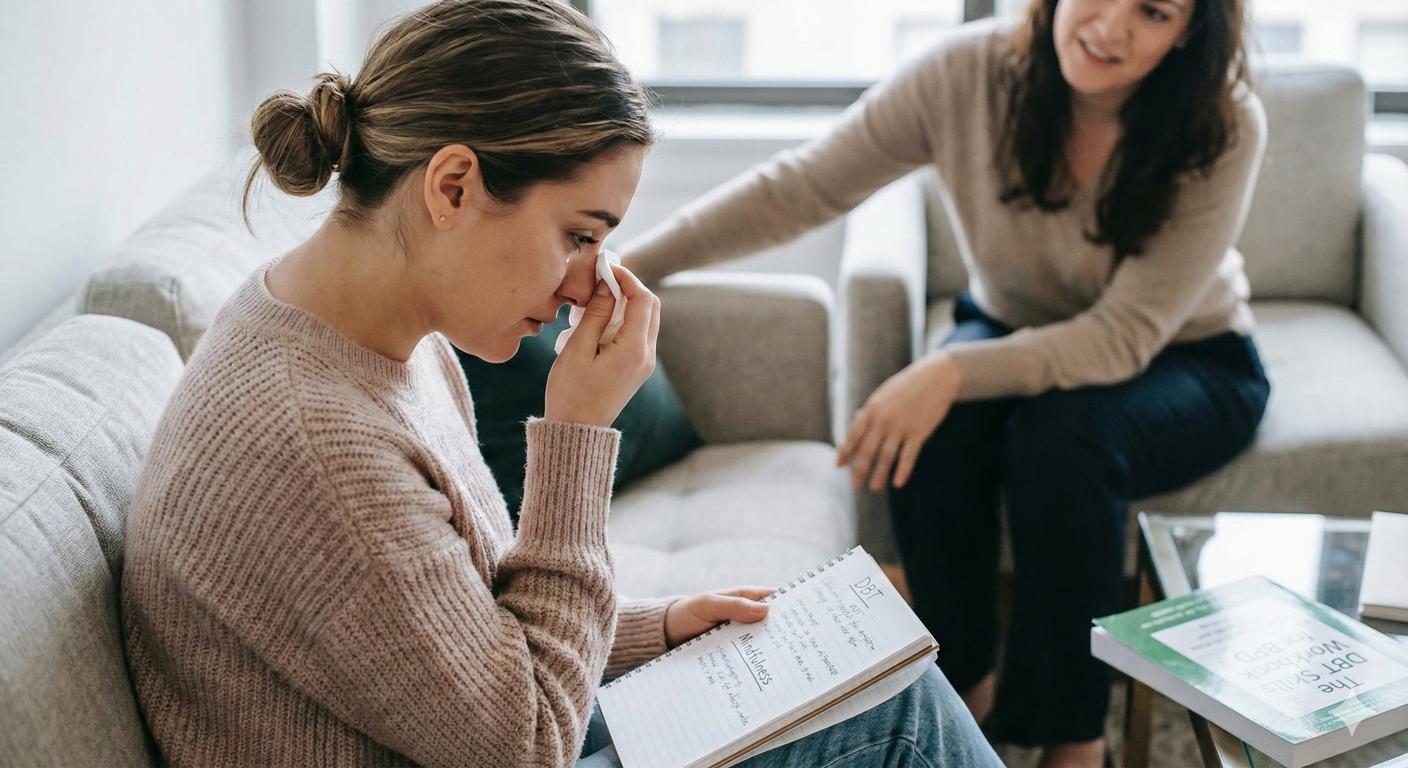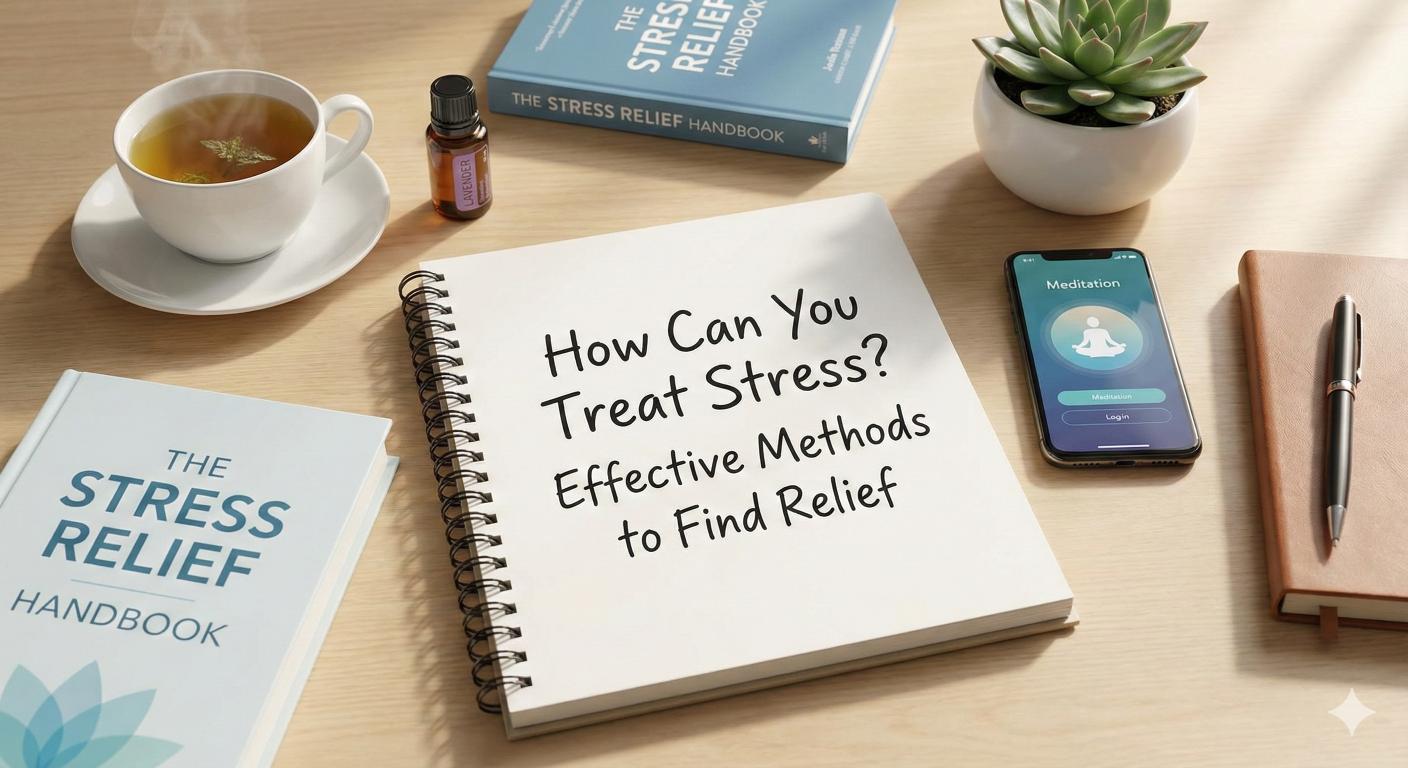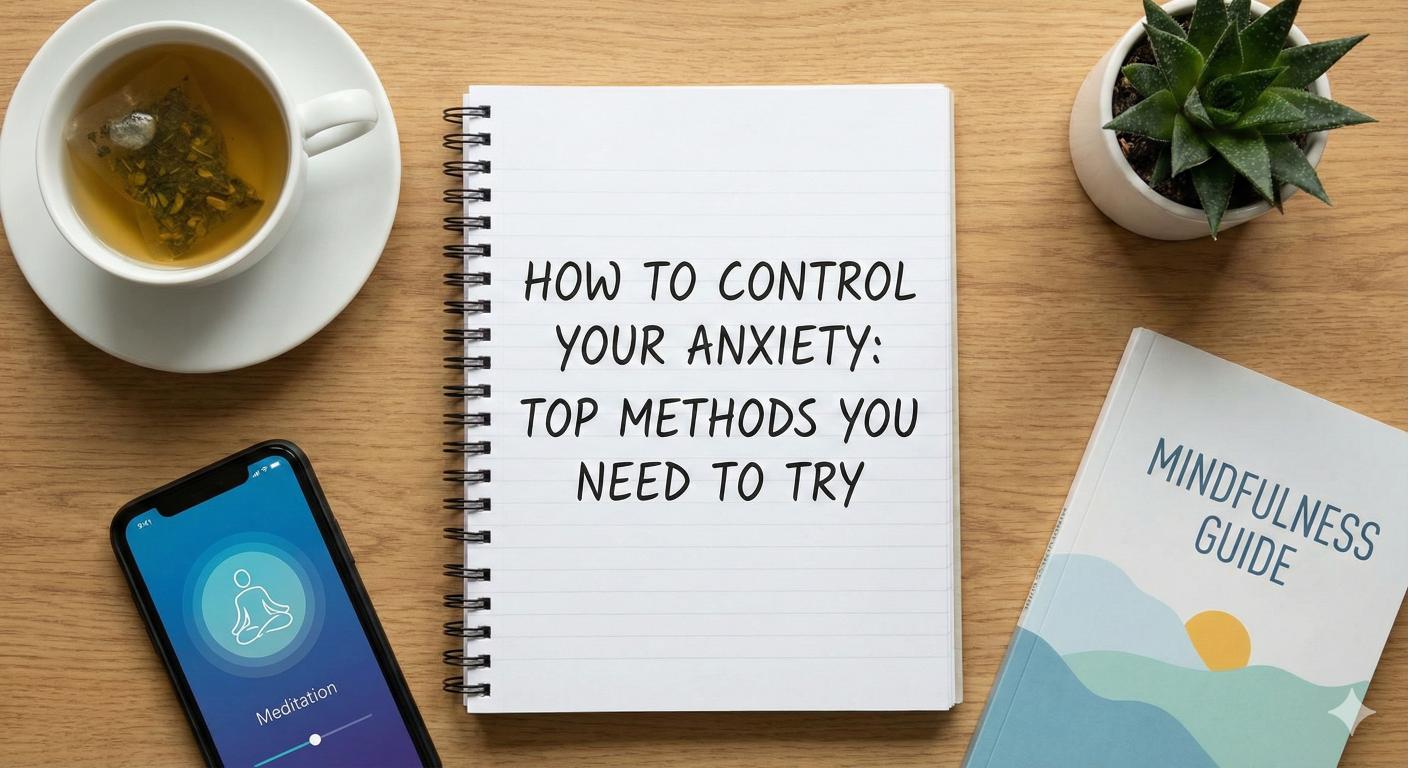Effective Guided Imagery for Anxiety Reduction
Discover guided imagery for anxiety reduction and learn techniques to calm your mind and enhance well-being.

Understanding Guided Imagery

Definition and Principles
Guided imagery is a relaxation technique that helps individuals use their imagination to lower stress, pain, or negative feelings. By envisioning a peaceful and calming place while engaging all senses, this method aims to ease tension and elevate mood. It operates as a mind-body technique that can alter physical conditions through the power of the mind [1].
The core principles of guided imagery involve focusing the mind on soothing mental images. This concentration can lead to physiological responses, helping to reduce stress levels and improve mental and physical health. Guided imagery works effectively with various modalities, including mindfulness meditation, relaxation exercises, and hypnosis, making it a versatile tool in managing anxiety and promoting well-being.
Benefits of Guided Imagery
Guided imagery offers numerous benefits for managing anxiety and improving overall health. Some of the key advantages include:
BenefitDescriptionStress ReductionHelps manage stress more effectively, leading to potential health improvements. Excessive stress can cause inflammation in the body [1].Pain ManagementShown to lead to significant pain reduction in conditions like arthritis, decreasing reliance on pain medications.Enhanced MobilityImproves physical mobility in patients with joint diseases and chronic health issues [1].Physiological BenefitsAssists in regulating breathing and calming heart rates, benefiting major body systems such as metabolism and digestion.Wide UseApproximately 5 million adults in the U.S. utilize guided imagery primarily for stress reduction and health complaints.
Through guided imagery, individuals can tap into their imagination to facilitate recovery, address specific health complaints, and enhance emotional well-being. The safety and accessibility of this technique make it an appealing option for various populations. For more tools and techniques to help manage anxiety, consider exploring topics like breathing exercises to control anxiety and the importance of sleep hygiene in reducing anxiety.

Effectiveness of Guided Imagery for Anxiety
Guided imagery has emerged as a promising technique for reducing anxiety. This section examines the research findings supporting its effectiveness, particularly comparing nature-based guided imagery to traditional imagery methods.
Research Findings
Numerous studies have demonstrated that guided imagery can effectively reduce anxiety, especially in individuals with moderate levels of anxiety. A key study indicated that guided imagery participants experienced significant decreases in anxiety levels compared to those who employed non-nature-based imagery techniques [3].
In a controlled study, participants underwent both nature-based guided imagery sessions and traditional urban-based sessions. Results showed that all participants experienced lower post-session anxiety scores. However, those who engaged in nature-based guided imagery exhibited a notably greater reduction in their anxiety levels.
Study TypeSession TypeAnxiety ReductionComparative StudyNature-Based GIGreaterComparative StudyUrban-Based GILower
Nature-Based vs. Traditional Imagery
The distinction between nature-based guided imagery and traditional imagery techniques is crucial. Research consistently shows that nature-based guided imagery is more effective at reducing anxiety. In particular, one study revealed significant findings supporting the hypothesis that nature-based sessions yield more substantial reductions in state anxiety compared to their urban-based counterparts [4].
The effectiveness of nature-based imagery likely stems from its grounding and calming effects, enhancing relaxation and promoting positive mental states. This connection to nature can be particularly beneficial for those looking for holistic approaches to managing anxiety.
For those interested in integrating guided imagery techniques with other anxiety management strategies, combining guided imagery with practices such as breathing exercises to control anxiety or grounding techniques to stay present can create a more comprehensive treatment plan.

Practical Applications of Guided Imagery
Guided imagery is a versatile tool that can be effectively used in various settings to promote mental and physical well-being. Two noteworthy applications include support for smoking cessation and management of pain, particularly in individuals suffering from joint diseases.
Smoking Cessation Support
Incorporating guided imagery into smoking cessation programs can assist individuals in coping with cravings and maintaining motivation to quit. Research suggests that guided imagery interventions could be practically integrated into quitlines and other support systems, potentially reaching a wider audience. By visualizing themselves as non-smokers and imagining the benefits of a smoke-free life, individuals can strengthen their resolve to quit.
Guided Imagery TechniqueDescriptionCraving VisualizationImagining the urge to smoke as a passing wave, which washes over and subsides.Future Self VisualizationPicturing a healthier, smoke-free self in a year or more, enjoying activities without the burden of smoking.Relaxation TechniquesUsing calming imagery to manage withdrawal symptoms and anxiety that come with quitting.
For those seeking strategies to manage their anxiety during the quitting process, guided imagery can be an effective component of their overall strategy.
Pain Management and Joint Diseases
Guided imagery has been commonly used in various psychological interventions, especially in Cognitive-Behavioral Therapy (CBT) to manage pain associated with chronic health conditions such as arthritis, cancer, and other joint diseases. The practice is effective in providing relief, with patients reporting reductions in pain and decreased reliance on medication as a result.
ConditionBenefits of Guided ImageryCancerHelps to alleviate anxiety, provide comfort, and manage pain during treatment.ArthritisAids in reducing stiffness and discomfort by guiding the individual to visualize their joints moving freely without pain.Joint PainEncourages relaxation and a positive mindset, which can lessen the perception of pain.
Through the invocation of positive mental imagery and grounding techniques, individuals can promote a more relaxed state, aiding not only in pain management but also supporting their overall emotional health. For additional methodologies that complement these practices, consider exploring breathing exercises to control anxiety or grounding techniques to stay present.
Guided imagery showcases its efficacy beyond anxiety reduction, proving to be a valuable strategy in both smoking cessation and pain relief, emphasizing its role in holistic health approaches.

Implementing Guided Imagery Techniques
Exploring effective guided imagery techniques can significantly aid in anxiety reduction. Two primary methods for implementing these techniques are visualization methods and audio enhancements.
Visualization Methods
Guided imagery incorporates visualization techniques to promote relaxation and mental clarity. This method allows individuals to conjure tranquil spaces or scenes in their minds, effectively reducing negative emotions and fostering a sense of calm. By engaging all senses, individuals can create a multi-dimensional experience that enhances their ability to relax. For example, they might visualize themselves on a serene beach, feeling the warmth of the sun, hearing the gentle waves, and smelling the salty air. This immersive approach can help ease tension and elevate mood.
To effectively use visualization, individuals may follow these steps:
By practicing these visualization techniques regularly, individuals can train their minds to enter a relaxed state more readily, which can contribute to ongoing anxiety management.
Audio Enhancements
Integrating audio enhancements can further enhance the effectiveness of guided imagery practices. Utilizing audio recordings can help individuals fully focus on the guided imagery process. Voice recordings or self-created scripts can promote relaxation and calmness, making it easier for someone to engage deeply in the visualization.
Audio enhancements may include:
By utilizing audio enhancements, individuals can deepen their engagement with guided imagery techniques, facilitating a more profound sense of calm and aiding in overall anxiety reduction. For more supportive methods, individuals can explore the role of self-care in anxiety prevention or consider addressing anxiety in healthcare settings.
Guided Imagery in Mental Health
Guided imagery is a powerful relaxation technique that plays a beneficial role in mental health, specifically in areas such as anxiety reduction and the management of depression and PTSD.
Anxiety Reduction
Guided imagery helps individuals manage anxiety by allowing them to visualize calming and peaceful environments. This technique involves using their imagination to create a relaxing mental space, which can effectively lower stress levels and enhance overall well-being. Research indicates that guided imagery can reduce cortisol levels, a hormone associated with stress, as well as alleviate feelings of anxiety.
Effectiveness of Guided ImageryResults ObservedReduction in Cortisol LevelsSignificant decrease after guided sessionsImprovement in Stress ManagementNotable relief in multiple studiesAlleviation of Anxiety SymptomsSuccessful in various age groups, including teenagers
In individual sessions or group settings, guided imagery can lead to substantial improvements in anxiety and stress management. For further effective techniques, check out our articles on breathing exercises to control anxiety and grounding techniques to stay present.
Depression and PTSD Management
Guided imagery is also effective in managing conditions such as depression and post-traumatic stress disorder (PTSD). By promoting relaxation and positive visualization, individuals can develop healthier coping mechanisms. This mental exercise encourages the user to focus on serene settings, which can help them detach from negative thoughts linked to their depression or traumatic experiences.
Studies have shown that individuals reporting depressive symptoms often experience reduced feelings of sadness and emotional distress after practicing guided imagery. Additionally, patients dealing with PTSD can benefit from the calming effects of this technique, helping them process their experiences more effectively.
Impact of Guided Imagery on Mental HealthObserved BenefitsAlleviation of Depression SymptomsImproved mood and emotional stateManagement of PTSD SymptomsDecreased anxiety associated with triggersGeneral Mood ElevationEnhanced outlook on life through visualization
For those looking to integrate guided imagery into their mental health strategies, exploring other methods like utilizing journaling as an anxiety management tool and practicing self-care can complement this approach. The multifaceted benefits of guided imagery underscore its significance as a valuable tool in the realm of mental health.
Future Research and Considerations
Therapy Integration
Guided imagery is emerging as a valuable tool in therapy, particularly within Cognitive-Behavioral Therapy (CBT) frameworks. It serves as both a primary and secondary intervention strategy, allowing for significant applications across various therapeutic contexts like pain management and mental health interventions. Future research could focus on effectively integrating guided imagery techniques with other therapeutic modalities to enhance treatment outcomes for anxiety and related disorders.
Moreover, studies indicate that combining guided imagery with mindfulness practices may further improve its effectiveness in managing anxiety and may provide more comprehensive care. As guided imagery continues to develop, it may also become a standard practice in settings such as hospitals for patients who experience heightened anxiety, especially in areas dealing with chronic illness or surgical procedures [6].
Potential Health Applications
Guided imagery shows promise not only for anxiety reduction but also for various other health applications. Research spanning disciplines like psychology, medicine, nursing, and rehabilitation supports guided imagery's potential in promoting healing and health maintenance. Its effectiveness as a cost-effective and easily accessible intervention could be particularly beneficial in various therapeutic settings that lack direct access to nature stimuli.
A specific area warranting further exploration includes the unique benefits of nature-based guided imagery. Studies have suggested that participants engaging in nature-themed imagery experience greater reductions in anxiety compared to traditional imagery. Thus, research could aim to validate these findings across larger populations and diverse demographics, exploring specific conditions that respond well to guided imagery techniques.
Overall, the potential advantages of integrating guided imagery into broader health and wellness frameworks could lead to innovative strategies in managing anxiety, improving quality of life, and facilitating holistic approaches to health management. For additional support techniques, consider exploring breathing exercises to control anxiety or the importance of sleep hygiene in reducing anxiety.
References
[2]:
[3]:
[4]:
[5]:
[6]:
More Resources
A team ready to start your journey.
Get in touch — today.
We are a safe space – a haven for exceptional individuals to receive discreet, personalized, in-person treatment and care.
.avif)










